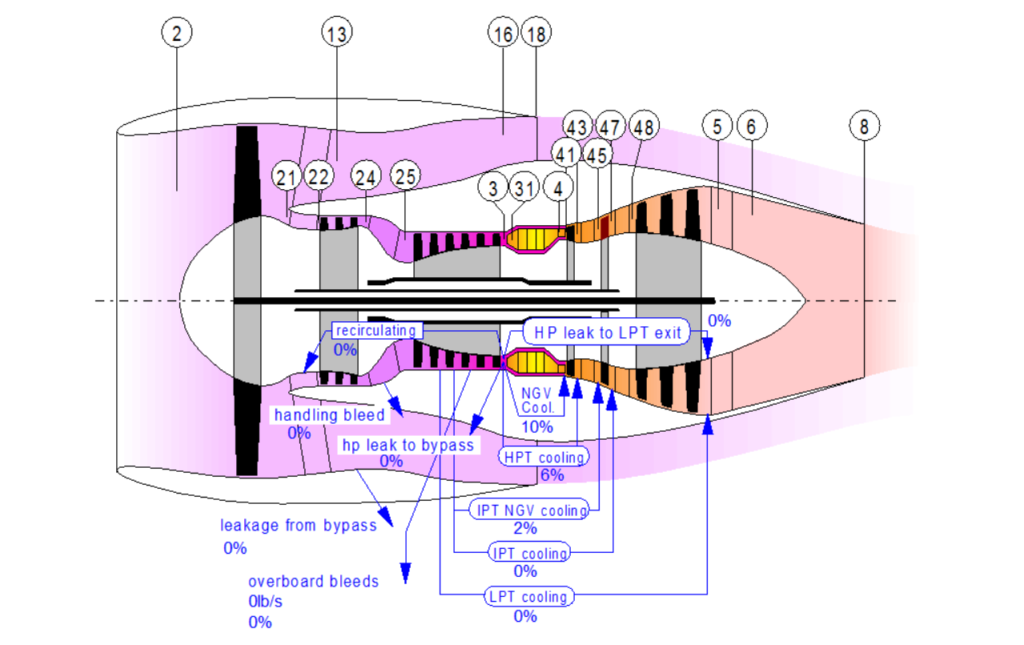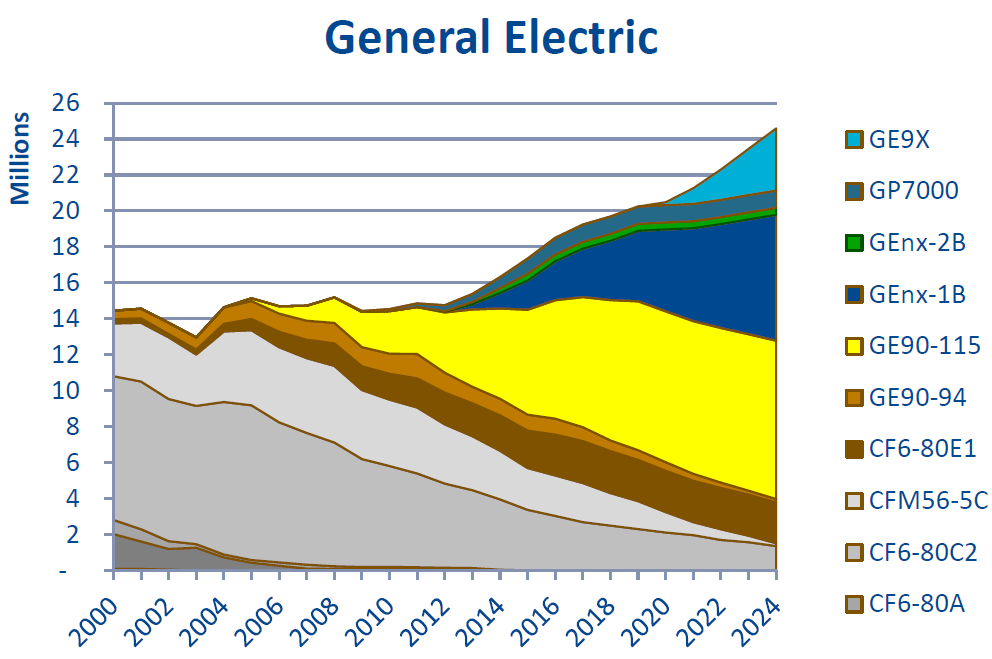Leeham News and Analysis
There's more to real news than a news release.
Bjorn’s Corner: Aircraft engine maintenance, Part 4
March 24, 2017, ©. Leeham Co: After covering the maintenance market for single-aisle engines, time has come for the engines used on wide-body aircraft. The engine maintenance for a wide-body engine is a bit different to the single-aisle engine. The difference is caused by the longer flight times for the wide-bodies. This makes the flight time wear a more dominant maintenance driver than it is for the single-aisle engines.
The changes in overhaul work caused by the difference in flight profiles and the lower number of engines in the market (compared to the single aisles) will affect how the overhaul market is structured and who are the dominant players.
Wide-body market
To understand the wide-body engine overhaul market, we need to understand what engines are in use and how that changes over the years. Once again, we got help from Alistair Forbes, Services Research Manager at Rolls-Royce, with the statistics.
The use data is from the OAG (Official Airline Guide) database. OAG only captures scheduled flights. It means charter and freight flights are not part of the diagrams. The loss of freighter engines in the charts will not change trends or relationships between the engines.
GE wide-body engines
The first graph (Figure 2) shows the Engine Flight Hour (EFH) statistics for GE Aviation, the dominant wide-body engine supplier.
GE overtook Pratt & Whitney as the dominant wide-body engine supplier with the successful CF6-80C. It gradually became most-used engine on Boeing’s 747-200 and -400, with further applications on Boeing 767, MD-11, Airbus A300 and A310. The engine is now in its sunset period.
GE’s presently most successful engine is the GE90-115 followed by GEnx. Both engines are on a positive trend for flight hours, an important fact for the engine overhaul market.
An artifact is the CFM56-5C, which is the engine for the Airbus A340-300. CFM is owned to 50% by GE and to avoid a separate diagram for this engine, it’s included under the GE heading.
Pratt & Whitney
Figure 3 shows the Engine Flight Hour (EFH) statistics for Pratt & Whitney (PW) wide-body engines.
The PW4000 in its 94-inch fan variant was the last successful wide-body engine from PW. It found applications on the same aircraft as the GE CF6-80C. The 100-inch variant is used on the A330 and the 112-inch on the Boeing 777-200/-200ER aircraft.
GP7000 is a joint venture with GE for the Airbus A380 with Emirates Airline as dominant user.
Rolls-Royce
Rolls-Royce is the engine supplier that has taken over from Pratt & Whitney in the wide-body market, Figure 4.
If one adds the EFH for Pratt & Whitney and Rolls-Royce for the past several years, one comes almost exactly on the number for GE’s engines. GE and PW/Rolls-Royce is dividing the market with PW trending down and Rolls-Royce up.
The successful engine is presently the Trent 700 used on the Airbus A330. It enjoys the dominant market share on this aircraft. Future growth engines will be Trent 1000 on Boeing 787 and Trent XWB on Airbus A350.
One could combine the use numbers for the Trent 1000 and Trent 7000 for the A330neo. It’s the same engine with only minor changes to fit a customer bleed requiring A330neo.
The RB211, Trent 500 and 800 are all sunset engines.
Next step
With the above use statistics we will calculate the shop visit data for the different engines and analyze how that affects the market for wide-body engine overhauls in the next Corner.







Rolls Royce share price support
You mean the trend up? It is based on orders and deliveries on the A787 and A350 so not much to say.
Basically yes,it’s quite a sharp uplift isn’t it? All sorts of strange things going on with RR share price and management at the moment, but that is quite an interesting illustration.
RR did focus on big commercial engines and dropped the narrowbody ones. They realized they did not have resources for both. The margins for narrowbodies in a three way battle would be razor thin. With GEAE CEO’s dreaming of becoming Boeing CEO’s letting RR grab the Airbus business, some day GE will regret putting RR in their new position. Boeing is quickly becoming GM like and Airbus like Mercedes with quick improvements of most products (except maybe the A380)
P&W really have messed up big time on widebodies since the 80s haven’t they.
Bjorn, does ‘power by the hour’ work better for OEMs with short haul / narrowbody engines or with long haul / widebody engines, if there is any broad difference at all?
It works better for wide-body engine I would say. A wide-body that gets stranded because of an engine issue is more work and cost to handle than a narrow-body as you often can re-book single aisle pax without fixing overnight accommodation etc. Often this is not the case for a wide-body flight, hence you want ultimate reliability which favors power by the hour.
Yeah, certainly does get expensive on those long haul delays. Not least the up to 600€ compensation per passenger where mandated.
With the high utilisation rates their models require and the number of infrequent flights into low traffic airports, short haul LCCs also make sense to me. Certainly my experience of swap outs has been quicker and smoother with legacies than LCCs.
This article and comments are helping me to understand the RR strategy, why they concentrated on widebodies and the awkward cash flow gap that they are experiencing.
There is a very interesting article on Boeings tax and tax write off arrangements in the Seattle Times, I am certain that Scott will have something to say and some analysis. No wonder they are keen to change the arrangements at this moment in time.
The Lexington institute propaganda on behalf of it paymasters is so crude that it basically acts as an interpretation device for thier political aims.